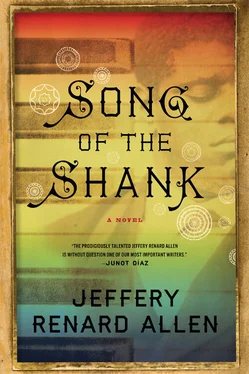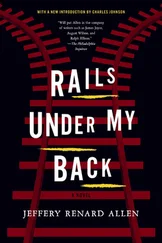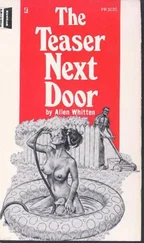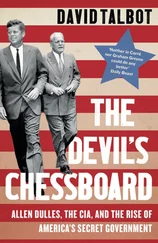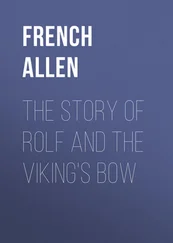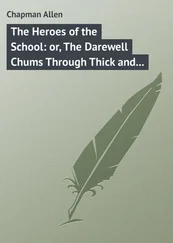He hires a local printer to design a seal bearing an image in Tom’s likeness, a sparsely detailed oval that finds Tom seated at the piano, the words Blind Tom Exhibition encircling him. Also has the printer produce several reams of watermarked stationery with the same image. From this point on all promotional documents he sends out in public or private will bear the inked-in oval, just as all business-related correspondence will be scripted on the letterhead. He’s in control of what he does and what he wants. The difficulties — the lies, the put-downs, the accepting and accommodating, the laughter and complicity, the money spent or promised, the numerous rejections he has suffered in his efforts to secure a venue for Tom’s debut — he has had up to now don’t seem unfair to him any longer. His head is fully above the water, something definite bobbing into view, the surface part of the whole pattern that was once too far removed for him to bear any true conception of it, that he is only now beginning to see. (Perhaps he has always seen it?)
That afternoon a letter that he has been expecting for weeks arrives by courier. Return receipted to General Bethune, the letter is a deposition signed by a panel of medical experts, native and foreign, attesting to Tom’s mental and physical makeup. Between us we have arrived at a scientific evaluation of a Negro boy who goes under the name Tom, a slave boy who is approximately seven years of age and fraught with all of the handicaps of his race, but who can also demonstrate elevated and refined musical sensibility at the piano. He possesses the muscular ability to reproduce by hand and voice many of the finest selections from the European catalogue. This is in and of itself remarkable since the Negro’s thought-organ generally is a lifeless and submissive receptacle with no power of specific reaction to anything challenging or demanding that might be introduced to it. So much so that the Negro’s imitative abilities are usually little better than those of a parrot. Said fact, however, does not hold true for this Negro boy, Tom. What is even more incredible is that he is, in most respects, a far reduced physical representative of the Negro specimen, for his Maker has singled him out for direct burdening with a number of crippling afflictions — Blindness, Imbecility — ailments characterized by symptoms the full range of which a respectable member of the Anglo-Saxon language is both too chaste and too weak to describe in detail. It is material law that there exist points of reference the Caucasian and the Negro do not share and never will. Still, we, as men of science, shut our eyes to the known and accepted qualities and endowments of the Negro before we began our examination so that we would be fresh and unprejudiced in our deliberations. And we, one and all, agree that we are as perplexed now as we were before we began. We know of nothing out of the ordinary in this boy’s upbringing, his parents being largely addicted to the culture of cotton. So we are left to ask — Is this Negro boy, Tom, the product of Nature or intentional design, and if the latter, whose? Medical science can draw no conclusions. In fact, this Negro slave, Tom, age seven, defies the laws of medical science. Dr. Hollister is among the signers.
In this town, Culture manifests itself in a single structure, Hibernian Hall, a splendid neoclassical building, all sculptured stone and painted glass, with figures of the Greek (Roman?) gods carved in deep clefts hollowed out of the facade, summer light giving the hard pale muscles the color of flesh, and a smattering of green- or wine-colored bills positioned in such a way as to cause the viewer to lower his face from the celestial sights above and take in the terrestrial fact below, a gilded glassed-in cubicle where one may purchase tickets. The venue maintains a busy schedule hosting fund-raisers and temperance meetings, policemen’s balls, fashion displays of the latest in clerical and mortuary designs, and soirees and barbecues put on by the rich. Perry Oliver finds a keen satisfaction in knowing that the operators rarely book an appearance that might be categorized as pure entertainment, niggers — minstrels — providing what little pure entertainment there is. So some might have expressed more than a bit of surprise to learn that it didn’t take much convincing to get the operators to agree to put on an evening that differs radically from their usual fare, that Perry Oliver had completely won over Mr. Scowcroft, the venue’s director, with a terse summary of Tom’s history (supposed) and talents (actual), a booking fee of five dollars, an advance of another five, and promises of a full house, the director taken in by both the actual fact of the money and the supposed facts of Perry Oliver’s promised words.
Perry Oliver signs the agreement and waiver, surprised that Scowcroft has given in so easily, that Scowcroft hasn’t even requested an audition, the last thing he expected.
I hope you and your nigger will make them marvel, Scowcroft says, sounding quite sincere. Wind him up good.
Perry Oliver leaves Hibernian Hall, bearing away with him an acute awareness of his achievement and stunned by his sudden luck. (A date. A venue.) Everything falling into place. The biggest barriers are down. He is even further along than he had hoped. No longer that impoverished notion of chance. Can it really be this easy? He justifies himself to himself. A man moving at first with the force of idea purely. And now so much lies far behind. And still moving. Much ahead still. (Not as far perhaps.) The comprehensive gaze. “Blind Tom Exhibition” reduced for the first time to its true dimensions. The loneliness and emptiness of those short streets by which he returns home. Low-roofed houses spaced far apart, set in their appointed places, self-contained in misery and monotony. Cast in late summer light. Unsparing of his merriment, he purchases a freshly issued Paul Morphy medallion daguerreotype that he will present as a gift to Seven in celebration of Tom’s (pending) premiere. Set in a wood frame, the daguerreotype is a clever series of images, an arrangement of ovals showing varied positions of the chess master’s head against dark and light backgrounds. Eight small ovals circling a large one. A lunar cycle. A rising of planetary proportions.
He takes Tom into the tailor’s shop. Needles in her mouth, the tailor measures Tom with ruler and string. A nigger woman sits at the sewing machine. Tom can hardly keep still, keep his arms outstretched, for listening to the sound, the click and clatter.
Mr. Oliver has decided on two designs. The first a collarless jacket with a row of white (bone) buttons down the front, breeches and stockings in accompaniment. The other an Eton jacket with coordinated vest and striped pants. Both jackets in black.
The tailor puts her fingers under Tom’s shirt. Lifts one pants leg then the other. Squeezes his biceps. Kneads his chest. Touches his back, hands circling into the cotton. Tugs at elbow and sleeve. Looks at Seven in sober outrage. Can the nigger keep still?
This nigger can’t keep still.
Keep your nigger still.
She can’t quite fix his dimensions. Tries again. Now her every touch startles Tom.
They wander down one long aisle after another lined with shelves reaching all the way to the ceiling where logs of cloth are piled up. Huge spools of thread like squat trees down another corridor. Now don’t let that nigger go off and poke himself. The sound of one sewing machine after another filling the high room.
Final fitting, Tom stands before the tailor to slip into his new clothes, test them for comfort, give and grab. The usual cursing complaints. The finished product is something to behold. Two fine suits, life glistening in each button.
Читать дальше
